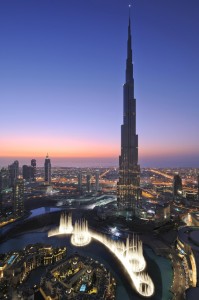
The world’s first skyscraper was the Home Insurance Building in Chicago. It was build back in 1884 and it had a barely 10 floors and the modest height of just 42 meters. About 130 years after the completion of this construction, skyscrapers have increased their average height by more than ten times. As a result, we now have giants like China’s Shanghai Tower, which is 632 meters tall, or UAE’s Burj Khalifa that has a height of 828 meters.
But what is the secret behind this concrete monsters? Master architectural and construction skills? Sure. Modern equipment? Without a doubt. Above all, however, the secret recipe to these buildings’ impressive height is… vanity.
The Council on Tall Buildings and Urban Habitat (CTBUH) has released an interesting ranking called the Vanity Height Index. It lists the world’s tallest construction in order of their vanity value. In other worlds, it estimates the meters of useless space of each of the tallest buildings. This space is also known as “vanity space” and it is usually designed by architects in an attempt to add a few more meters to a construction’s total height. That is done through architectural elements like decorations and ornaments, which practically remain unoccupied and unused.
 According to the index, Dubai’s Burj Khalifa has the most unoccupied space. The tower’s height is almost 830 meters, but 244 meters from it are unoccupied yet. Simply said, 29% of the world’s tallest skyscrapers are not used for anything. CTBUH has found that if Burj Khalifa’s total height was equal only to the height of its unoccupied space (244m), it would still be an impressive construction. Moreover, if it was located in Europe, 244 meters would be enough to place it among the continent’s highest buildings.
According to the index, Dubai’s Burj Khalifa has the most unoccupied space. The tower’s height is almost 830 meters, but 244 meters from it are unoccupied yet. Simply said, 29% of the world’s tallest skyscrapers are not used for anything. CTBUH has found that if Burj Khalifa’s total height was equal only to the height of its unoccupied space (244m), it would still be an impressive construction. Moreover, if it was located in Europe, 244 meters would be enough to place it among the continent’s highest buildings.
Second is Zifeng Tower in Nanjing, China. About 30% of the space in it or 133 meters is unoccupied. It is followed by the Bank of America with 131 meters of vanity space.
The Burj Khalifa tops the ranking for most vanity space, it is not the world’s vainest building. That is because Burj Khalifa’s unoccupied space accounts for just 29% of the entire construction. In comparison, that of Burj Al Arab is nearly 40% or 124 meters. That makes the seven-star hotel the world’s vainest skyscrapers.
Even though the United Arab Emirates and Dubai in particular have a string presence on the vanity list, the research has found that the number of Chinese skyscrapers on the ranking is even higher. The report covers 74 super tall constructions from all over the world. Less than 20 of them are in the UAE, whereas 24 are set in China. The United States comes third with 16 skyscrapers on the list.
But Dubai is not the only city that dominates the Vanity Index. New York has two building in the top ten. In addition, pretty soon it will have a third representative when its One World Trade Center gets completed later this year.
World’s tallest vanity heights:
- Burj Khalifa (244m/29% non-occupiable)
- Zifeng Tower (133m/30%)
- Bank of America Tower (131m/36%)
- Burj Al Arab (124m/39%)
- Emirates Tower One (113m/32%)
- New York Times Tower (99m/31%)
- Emirates Tower Two (97m/31%)
- Rose Rayhaan by Rotana (96m/29%)
- The Pinnacle (95m/27%)
- Minsheng Bank Building (94m/28%)
The Vanity Index was inspired by Saudi Arabia’s project the Kingdom Tower, which aims to becomes to top Burj Khalifa and become the world’s new tallest tower. According to the council, the building will also rely on vanity space to reach its height of 1km.




































